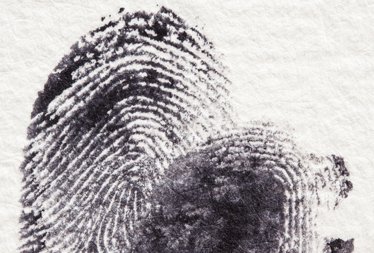The Forensic Acid Test
Criminals “sweating it out” beware: a new amino acid test can tell male from female fingerprints

Authorities have been using fingerprint analysis to catch criminals for more than 100 years. And technological advances have made it faster than ever to match fingerprints – nevertheless, a simple smudge or distortion can still render a print unusable.
“It’s nearly 2016 and fingerprint analysis is still focused only on pictures,” said Jan Halámek, Professor of Chemistry at State University of New York. Halámek and his team wanted to figure out what they could use within fingerprints to obtain forensically relevant information, without the need for an image. The researchers knew that women had approximately double the concentration of amino acids in their sweat compared to men – information they could use. But how do you extract amino acids from finger sweat?
The team’s novel protocol combines heat and acidic conditions to extract water-soluble amino acids from the lipid-based content of the fingerprint. Adding hydrochloric acid and applying 40 °C heat to fingerprints – deposited onto a portable polyethylene surface – causes the amino acid content in the fingerprint to migrate from the lipid-based content into the aqueous acidic solution, which the team can then use as an analytical sample (1).
Halámek and his team were then able to determine the levels of amino acids in the sample using a dual-enzyme cascade assay. (The cascade is initiated when L-amino acid oxidase reacts with the amino acids, resulting in the conversion of O2 to H2O2. Horseradish peroxidase then consumes the H2O2, causing the oxidation of the dye, odianisidine. The concentration of oxidized odianisidine was measured through spectrophotometry at 436 nm, using a Molecular Devices SpectraMax Plus384).
The researchers tested the method on 25 male and 25 female “mimicked fingerprint samples” which were correctly identified in 99 percent of samples. The team moved onto fingerprints from females taken from multiple surfaces, including a doorknob and a computer screen. And though the second part of the study only included three (female) participants, the researchers were able to identify the sex correct; from the fingerprints left on each of the five surfaces tested. “The results of this study proved that we could successfully extract amino acids from multiple surfaces and still be able to identify a female fingerprint,” said Halámek.
Halámek recognizes that the method has limitations, and notes “our method is destructive and therefore the fingerprint cannot be used for other tests. It also cannot be used if other methods (fluorescent powder, graphite, etc.) were already used to develop the fingerprint image.” But despite the constraints, the team isn’t dissuaded from further work on the topic and is currently in the process of developing methods for differentiating between other forensically-relevant attributes, such as age, ethnicity, or health status, as well as improving on the current fingerprint concept.
- C. Huynh et al., “Forensic identification of gender from fingerprints”, Anal. Chem. (2015) 22 11531-6. PMID: 26460203

Over the course of my Biomedical Sciences degree it dawned on me that my goal of becoming a scientist didn’t quite mesh with my lack of affinity for lab work. Thinking on my decision to pursue biology rather than English at age 15 – despite an aptitude for the latter – I realized that science writing was a way to combine what I loved with what I was good at.
From there I set out to gather as much freelancing experience as I could, spending 2 years developing scientific content for International Innovation, before completing an MSc in Science Communication. After gaining invaluable experience in supporting the communications efforts of CERN and IN-PART, I joined Texere – where I am focused on producing consistently engaging, cutting-edge and innovative content for our specialist audiences around the world.

















